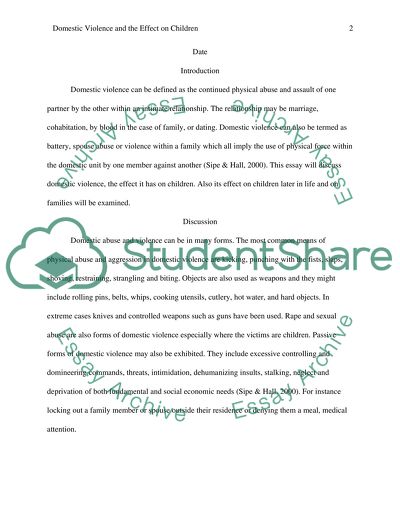Cite this document
(“Domestic Violence and the Effect on Children Research Paper”, n.d.)
Retrieved from https://studentshare.org/sociology/1451397-domestic-violence-and-the-effect-on-children
Retrieved from https://studentshare.org/sociology/1451397-domestic-violence-and-the-effect-on-children
(Domestic Violence and the Effect on Children Research Paper)
https://studentshare.org/sociology/1451397-domestic-violence-and-the-effect-on-children.
https://studentshare.org/sociology/1451397-domestic-violence-and-the-effect-on-children.
“Domestic Violence and the Effect on Children Research Paper”, n.d. https://studentshare.org/sociology/1451397-domestic-violence-and-the-effect-on-children.


